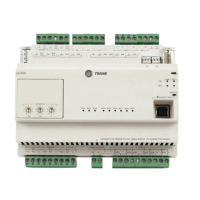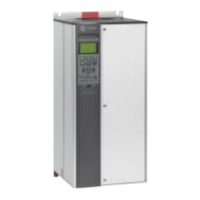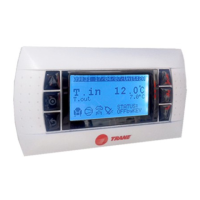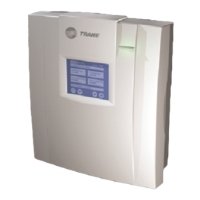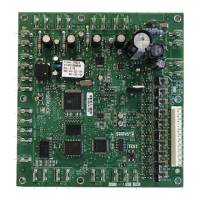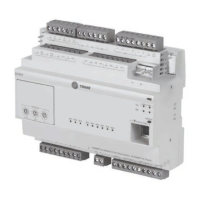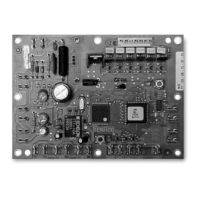Main Menu - Extended Closed Loop - TR200 - Group 21
21-** Ext. Closed Loop
The TR200 offers 3 Extended Closed Loop PID controllers in addition to the PID Controller. These can be con-
figured independently to control either external actuators (valves, dampers etc.) or be used together with the
internal PID Controller to improve the dynamic responses to setpoint changes or load disturbances.
The Extended Closed Loop PID controllers may be interconnected or connected to the PID Closed Loop controller
to form a dual loop configuration.
In order to control a modulating device (e.g. a valve motor), this device must be a positioning servo motor with
built-in electronics accepting either a 0-10V (signal from Analog I/O card MCB 115) or a 0/4-20 mA (signal from
Control Card and/or General Purpose I/O card MCB 101) control signal.
The output function can be programmed in the following parameters:
• Control Card, terminal 42: par.6-50
Terminal 42 Output (setting [113]...[115] or [149]...[151], Ext. Closed
Loop 1/2/3
• General Purpose I/O card MCB 101, terminal X30/8: par.6-60
Terminal X30/8 Output, (setting [113]...[115]
or [149]...[151], Ext. Closed Loop 1/2/3
General Purpose I/O card and Analog I/O card are optional cards.
21-0* Extended CL autotuning
The extended PID Closed Loop PID controllers (
parameter group 21-**, Ext. Closed Loop
) can each be auto-tuned,
simplifying and saving time during commissioning, whilst ensuring accurate PID control adjustment.
To use PID autotuning it is necessary for the relevant Extended PID controller to have been configured for the
application.
A graphical Local Control Panel (keypad) must be used in order to react on messages during the autotuning
sequence.
Enabling autotuning par.21-09
PID Autotuning puts the relevant PID controller into PID autotuning mode. The
keypad then directs the user with on-screen instructions.
PID autotuning functions by introducing step changes and then monitoring the feedback. From the feedback
response, the required values for PID Proportional Gain, par.21-21
Ext. 1 Proportional Gain for EXT CL 1, par.
21-41
Ext. 2 Proportional Gain for EXT CL 2 and par.21-61 Ext. 3 Proportional Gain for EXT CL 3 and Integral
Time, par.21-22
Ext. 1 Integral Time for EXT CL 1, par.21-42 Ext. 2 Integral Time for EXT CL 2 and par.21-62 Ext.
3 Integral Time for EXT CL 3 are calculated. PID Differentiation Time, par.21-23 Ext. 1 Differentation Time for
EXT CL 1, par.21-43
Ext. 2 Differentation Time for EXT CL 2 and par.21-63 Ext. 3 Differentation Time for EXT CL
3 are set to value 0 (zero). Normal / Inverse, par.21-20
Ext. 1 Normal/Inverse Control for EXT CL 1, par.21-40 Ext.
2 Normal/Inverse Control for EXT CL 2 and par.21-60 Ext. 3 Normal/Inverse Control for EXT CL 3 are determined
during the tuning process.
These calculated values are presented on the keypad and the user can decide whether to accept or reject them.
Once accepted, the values are written to the relevant parameters and PID autotuning mode is disabled in par.
21-09
PID Autotuning. Depending on the system being controlled the time required to carry out PID autotuning
could be several minutes.
Excessive feedback sensor noise should be removed using the input filter (parameter groups 6-** and 5-5*,
Terminal 53/54 Filter Time Constant/Pulse Filter Time Constant #29/33) before activating PID autotuning.
Parameter Description
TR200 Programming Guide 199
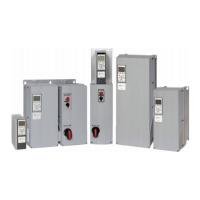
